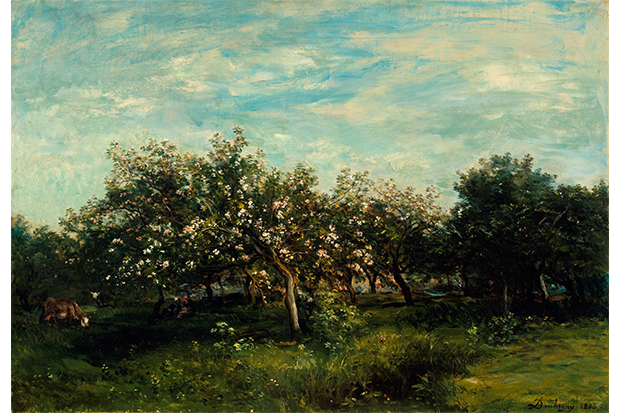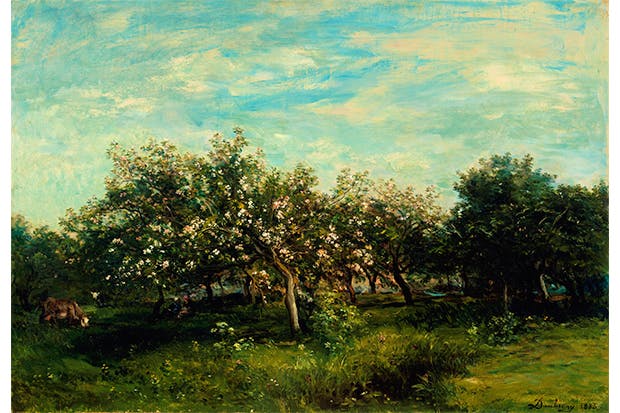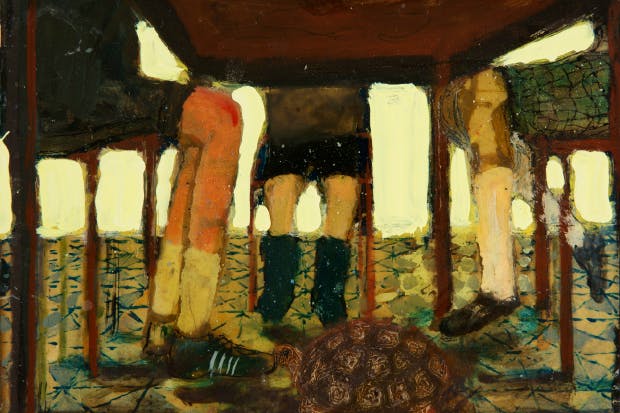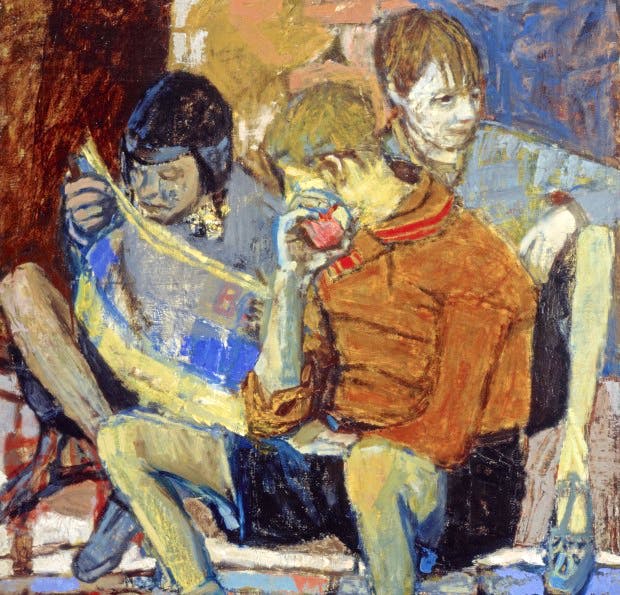The last boat I saw in the galleries on the Mound was a canoe that the Scottish painter Jock McFadyen had been using to explore viewpoints around the waterways of London. Now another vessel has sailed in, a full-scale recreation of the studio boat built in 1857 by the French painter Charles-François Daubigny, from the bow of which he ushered in the movement that would come to be known as impressionism.
Daubigny, a now sorely neglected artist, established an entirely novel approach to landscape painting that was to influence Monet, Pissarro and Cézanne and also, quite explicitly, Van Gogh. Inspiring Impressionism has an admirably clear narrative and it places Daubigny back where he belongs, at the fulcrum of modern painting.
The boat, which was far from Daubigny’s only innovation, was important. Up to that point, landscape painting had been a studio-based practice that sought to lead the eye to a distant horizon. The landscape was usually idealised, often framed by picturesque motifs and mostly seen from an elevated position. By placing his easel on an unsteady boat in the middle of a river, and painting directly from life, Daubigny assaulted these conventions.
Seeing the landscape from this low viewpoint meant a closer horizon and a flatter perspective. Making compositions with only water in the foreground (something even more evident in his seascapes), instead of the usual receding planes of land, meant that he had to employ an entirely tonal approach to explain distance. The fundamental language of landscape painting was being altered.
It was not only in his composition that Daubigny forged new paths. His physical technique also stood apart from that of his predecessors in that it was far looser, bolder and more energetic. His paint gallops across the canvas in textural leaps, with highlights smeared on with a palette knife. Explaining his increasingly unorthodox approach, he said, ‘I try to paint as directly and as rapidly as possible what I see and feel.’ Unsurprisingly, the critics initially recoiled and derided the ‘coarse, careless touch’ and ‘brutal impression of reality’.
The exhibition focuses on Daubigny’s influence on both Monet and Van Gogh with the stylistic succession made clear through intelligently and effectively paired examples that match subject and technique. Daubigny was obsessed with the countryside, finding endless inspiration in the orchards and farms of provincial France. Van Gogh was drawn to the same places and the same motifs, spending his final days working with crazed intensity in the midst of Daubigny’s familiar landscapes at Auvers before shooting himself.
Although studded with poppies and blossom, Daubigny’s was not a romanticised landscape. Some of his strongest pieces are bleak, violent works that embrace stormy seas and celebrate the overcast greys of the north. Unlike Monet, he generally rejected signs of encroaching modernity, only occasionally catching a belching black tugboat or ferry as evidence of industrialisation.
Nevertheless, it was modernity that allowed him to work the way he did. The sudden availability of oil paints in portable metal tubes allowed Daubigny and his followers to paint outside, directly from nature. This revolutionised painting. Furthermore, the advances made into synthetic pigments opened up a new palette and Daubigny embraced the startling power of cerulean blue and intense cadmium oranges and yellows. These hues are smeared, luminous and lurid, across his skies and waters. The same colours then mark Monet’s setting sun and Van Gogh’s fields.
Daubigny’s influence on Monet also went beyond the stylistic. Crucially, he also supported the younger artist, using his position on the Salon jury to exhibit his work and introducing him to Paul Durand-Ruel, the dealer who would become the great champion of impressionism. The importance of Daubigny cannot be underestimated.
If the Daubigny exhibition reveals how artists influence and support each other, the Surreal Encounters show across town at Modern One makes clear the significance of good collectors. Drawn from the work accumulated by four different patrons, this varied show demonstrates the extent to which surrealism was dependent on a handful of loyal supporters, with Roland Penrose and Edward James being particularly influential in the careers of Dalí, Magritte and Ernst.
The show lacks the revelations of Inspiring Impressionism, but surrealism’s many enthusiasts will find much to entertain them. The star, of course, is Max Ernst, whose inventive work has painterly punch as well as intellect behind it. Dalí’s best works here are the early or unheralded ones — made before he became the narcissistic ur-celeb behind the ‘Mae West Lips Sofa’ and ‘Lobster Tele-phone’ — in which he toys with technique. The strange organic shapes of Yves Tanguy, more effective than Dalí’s more explicit wanderings, are worth revisiting while Magritte remains as stolid and unremittingly Belgian as ever, one of the few painters whose work is flatter in the flesh than in reproduction.
There’s some fun to be had with the surrealists but the painter’s painter is the one in the boat on the Mound.
The post First impressions appeared first on The Spectator.
Got something to add? Join the discussion and comment below.
Get 10 issues for just $10
Subscribe to The Spectator Australia today for the next 10 magazine issues, plus full online access, for just $10.
You might disagree with half of it, but you’ll enjoy reading all of it. Try your first month for free, then just $2 a week for the remainder of your first year.














Comments
Don't miss out
Join the conversation with other Spectator Australia readers. Subscribe to leave a comment.
SUBSCRIBEAlready a subscriber? Log in